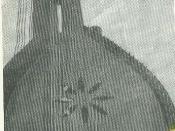Personality Theories
Most people use the term "personality" to identify the most obvious characteristic of a person, or to refer to a person's social skills. Personality theories try to explain why we think and what we think. Albert Bandura's Social-Learning Theory, Walter Mischel's Cognitive-Affective Theory and Carl Roger's Humanistic Personality Theory suggest reasons that try to explain our overall behavior. These personality theories help explain some psychological disorders as well as psychotherapies and other treatments.
The social learning theory of Bandura emphasizes the importance of observing and modeling the behaviors, attitudes and emotional reactions of others. One of his primary components is simply learning through observation. By observing models (any person) one can perform a response for which he or she is rewarded, and learning will occur. The most common examples of social learning situation are television commercials. Commercials suggest that drinking a certain beverage will make us popular and win the admiration of attractive people.
One models the behavior shown in the commercial and buys the product being advertised. Bandura also suggests that environment causes behavior, true; but behavior causes environment as well. He labels this concept reciprocal determinism. The world and a person's behavior cause each other. Bandura also stresses the effect of an individual's perceived abilities on his or her behavior, self-efficacy. An individual can believe that a certain course of action will produce certain outcomes but feel unsure as to his own ability to perform those actions. The less confident he is in his abilities, the less likely he is to engage in the behavior.
Another personality theorist, Walter Mischel developed the Cognitive-Affective Personality Theory. Mischel states that "trait theories do not predict behavior well and people do not behave consistently across diverse situations". Mischel added the notion of five cognitive-affective units; (1)...

![[Roger Bresnahan, St. Louis, NL (baseball)] (LOC)](https://s.writework.com/uploads/7/79036/roger-bresnahan-st-louis-nl-baseball-loc-thumb.jpg)
